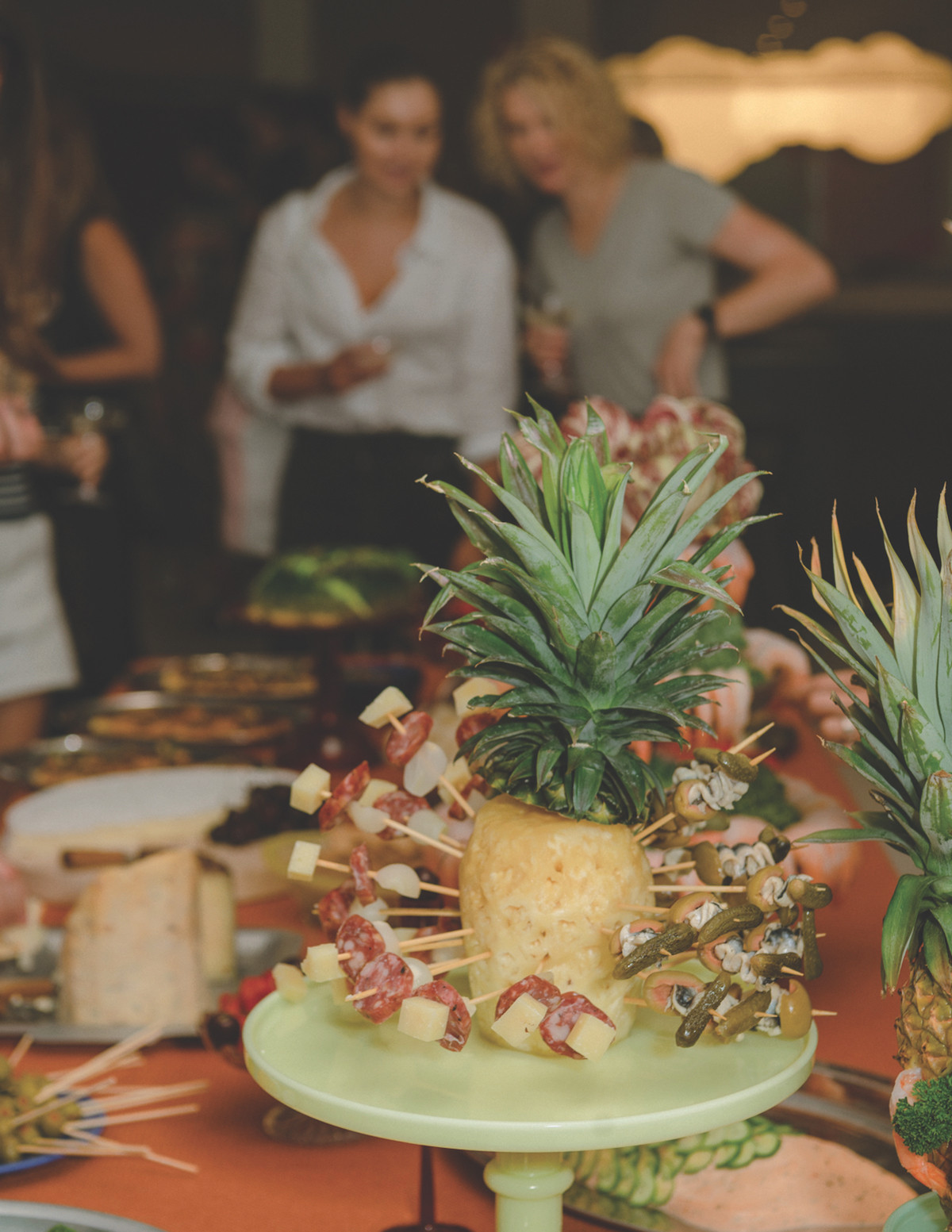On the menu of Sydney’s Fabbrica Bread Shop is a kind of fairy bread that puts the margarine-and-Wonder White creations of our youth to shame. Head baker Aniruddha Bhosekar’s version — or perversion, depending on your perspective — is made from leftover croissants from the bakery, which are torn up, soaked in custard and then baked until fudgy and dense. Butter is still key, but it’s found in the pastry layers rather than thickly spread on top. And in the traditional place of hundreds and thousands is a scattering of crayon-bright candied fennel seeds, known as saunf mithai — a nod to the baker’s Indian heritage. For Bhosekar, the dish was a way of blending his memories of the minty spice, which is served by the handful as an after-dinner freshener in many Indian restaurants, with a nostalgic Australian classic.
“I didn’t really know about fairy bread until I came to Australia in 2017, but I’ve made a lot of friends here in Sydney and it’s always nice to hear what they did as kids for birthday parties,” he says. “For myself, and many others I’m sure, the food we eat today has its roots in the late ’80s to early 2000s. No matter how far away we travel, the food we grew up eating always brings us home.”
That Proustian sentiment is forming the logic of restaurant menus all over the country. At Sydney stalwart Love, Tilly Devine, nostalgia comes in the form of a potato scallop, that chippy relic, jazzed up with a topping of crab salad. At Adelaide’s Alt, you’ll find devilled eggs with a swathe of miso, and at Melbourne’s Gimlet there’s a sturdy ’70s-style salade Lyonnaise (a Julia Child favourite). Crisp, cool prawn cocktail is slowly unseating burrata as the darling of the inner-city restaurant starters menu. Custardy, thick puddings are pulling up the rear.
The atavistic trend has infiltrated parties, too. Aplenty, the Sydney-based catering service founded by Michaela Johansson, was recently asked by the owners of the furniture boutique Cult Design to cater their 25th-anniversary party. The brief? A throwback ’70s dreamscape rendered through the medium of canapés. Johansson met it with panache, piling a table high with “staples that pull on the nostalgic heartstrings”: a multistorey tower of prawn cocktail with tiers of curly parsley; salmon mousse set in a vintage fish-shaped mould; cheese-and-cabanossi skewers poking out of a whole pineapple.

Recently, Johansson says, there has been a “big increase in the number of people and companies wanting a retro spin on their grazing tables”. She attributes it to the aesthetic theatre and performative joy of food from the ’70s and ’80s — combined, unexpectedly, with the simplicity of its ingredients. Cooking of that era embraced the concept of subtleties, the art of making food look like something else, but it used cheap, often ubiquitous ingredients: eggs, tinned fish, fruit. Dishes were beautiful masquerades, transforming the simple and everyday into the sublime — a culinary trompe l’oeil. “Once we did a two-tone green and yellow jelly mould, which I filled with sardines that were salt-cured,” says Johansson. “It looked amazing, but I was sure no one would eat it. Then I left the table for five minutes, and there were just the fish frames left.”
Sophie McComas-Williams, the director of Buffet, a hospitality-focused digital agency, believes the trend speaks particularly to our moment. “In times of economic downturn, we tend to look back to decades where times were perhaps easier in some ways, for inspiration and comfort,” she says. “Diners today want to be enveloped in a space for an evening.” Serving dishes that jog memories or bring back something in the diner’s past can be a shortcut to creating a sensorially rich experience. Sophie says the dishes “aren’t challenging, they don’t ask you to work too hard to decipher them or consider their many convoluted parts. They’re pure comfort — targeted indulgence.”
At Club Sup, the pop-up dinner community that Sophie McIntyre founded in the aftermath of Melbourne’s 2020 lockdowns, nostalgia and comfort are tools wielded for a purpose. Most of those who attend her dinners, which she hosts at restaurants in Sydney and Melbourne, are strangers to each other, gathered with the intention of connecting with new people. “At [Club Sup], nostalgia is everything,” she says.


“It’s the easiest way to calm everyone’s nerves. When I started the club, I would make things my mum made for us as kids — recipes that would make people feel like they were at home, and therefore immediately comfortable. Schnitzels, because to me that is the ultimate comfort food. Or big pots of seafood-and-fennel stew with crusty white loaves. People often forget that food is one of the easiest things to unify us and dissolve anxiety or indifference. Old recipes and dishes from our families are a way to feel that comfort fast.”
Johansson agrees. “There has been a journey back to simplicity in the way people eat and how we style food,” she says. “Food went through a wave of being so over the top and complicated. I remember years ago thinking, ‘Oh, how tacky — Marie Rose sauce!’ But now I’ve realised that there’s nothing wrong with mixing up a bit of cream, tomato, tabasco and Worcestershire and dipping some prawns straight in.” To each their madeleine.